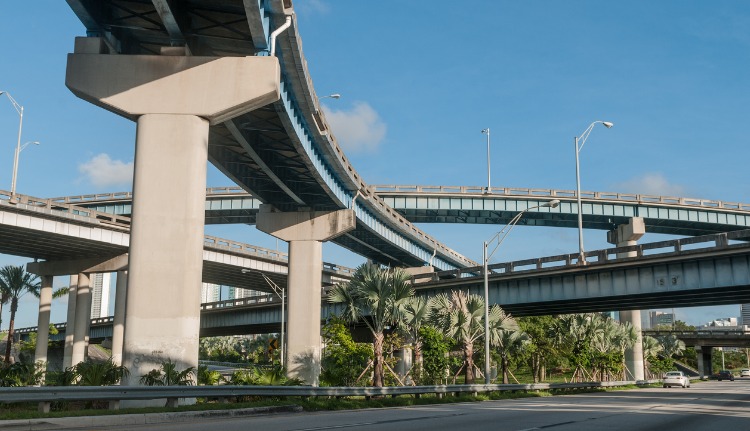
Concrete in Miami | Basics in Construction, from Construction
Concrete is a popular building material in Miami construction and is the component that makes up cities, roads, and bridges.
Concrete in Miami is seemingly everywhere. We can see concrete under our feet as we walk down the street. The material additionally helps to keep our homes off the ground.
Concrete in Miami is a unique building material. It doesn’t rot or burn like wood. It also doesn’t rust and wields a notable weight. When specialists build something out of concrete, we know that this will be around for a significant amount of time.
Most of all, however, concrete remains special because the material begins as a thick liquid that contractors can then mold into a wide variety of shapes.
How Does Concrete in Miami Work?
Modern concrete consists of four primary components:
A common misconception related to concrete in Miami is that concrete dries and becomes hard. In truth, cement reacts with water in a chemical process known as hydration. This is how concrete placed underwater and in other wet conditions can still change from a liquid to a solid state.
Builders produce Portland cement by mixing ground limestone, clay, shale, sand, and iron ore. They then heat the mixture in a rotary kiln to temperatures as high as 1600 degrees Celsius causing the materials to break down and recombine into new combines. These react with water in the hydration crystallization process. The procedure can take years. However, most constructors will strength test concrete after approximately 30 days.
It is also important that builders use the right amount of water. Too much water in the composition can lead to weaker concrete in Miami. Alternatively, too little water makes the concrete mix difficult to pour. The best mix compromises strength and workability.
From Cement to Concrete
While cement and water serve as the active components in concrete in Miami, builders cannot economically utilize these alone. They will add in aggregates instead to increase volume while tailoring the concrete in Miami for its final use.
Typically, 60 to 80 percent of concrete remains composed of aggregate materials. In most cases, “aggregates” refer to sand and gravel in concrete applications. When both are present in concrete construction, the result is concrete.
Nevertheless, manufacturers may use other aggregates depending on the unique characteristics necessary for the cured mix. Some aggregate materials may be added for lightweight concrete that provides unique insulating properties, etc.
Buying and Using Concrete in Miami
The form in which a builder acquires concrete depends on the size and nature of their job. Most providers will typically measure concrete provisions in cubic yards. Projects using up to about a cubic yard will often need a portable mixer.
Cement, sand, gravel, and water proportions may vary depending on how a contractor uses concrete in Miami. Thin work will often need more cement. However, a higher mass pour can afford to use more aggregate in the mixture.
Premixed and bagged cement from ASR Materials remains the ideal solution for smaller projects. These prepackaged solutions contain cement and aggregate. All the contractor needs to do is apply water to the mixture. For larger jobs, specialists can depend on ready-mix concrete in Miami.
Concrete in Miami | Abraham Sand & Rock | ASR Materials
Prices for concrete products can vary depending on the distance of delivery, in addition to the type of mix and order size. The best possible idea to obtain the best price and solution for the job at hand is to contact ASR Materials and rely on our trucking and delivery services.
We provide all types of concrete in Miami to fit various contracting and construction applications, delivered right to the job on time. To learn more, contract ASR Materials’ customer service team for more information!